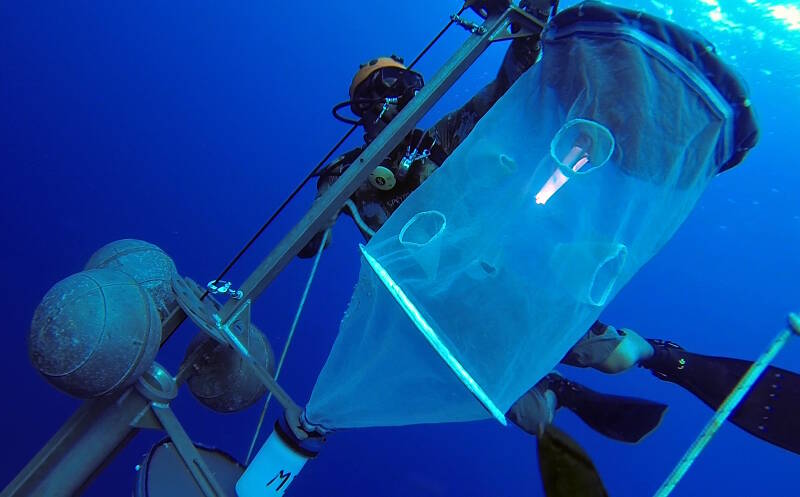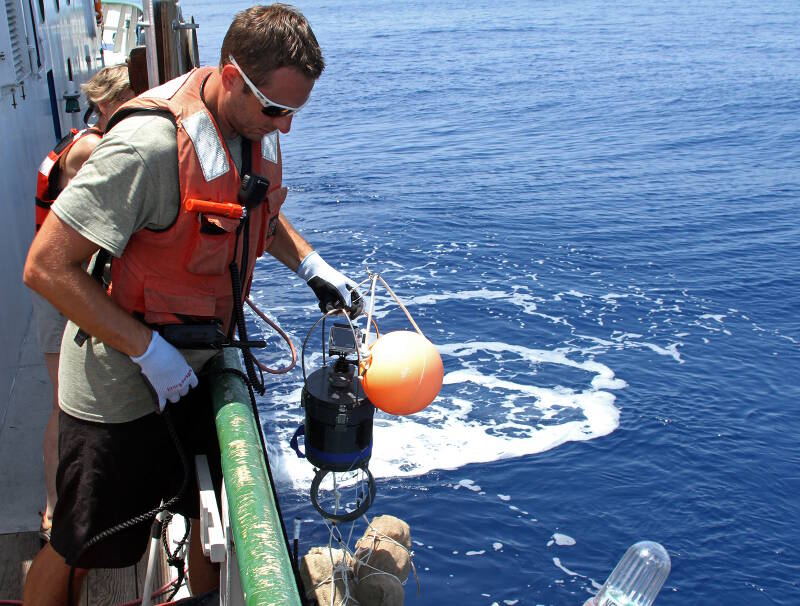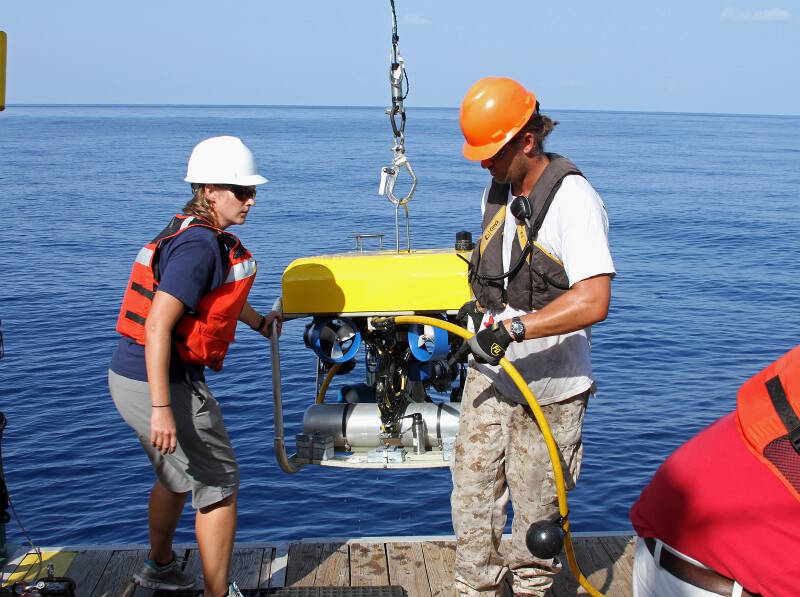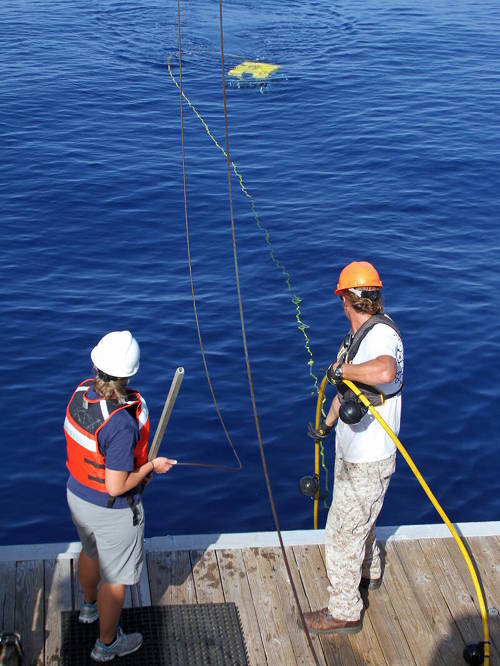
By Felicia Coleman, Director, Coastal and Marine Laboratory - Florida State University
August 16, 2014

Cedric Guigand deploys light traps in the evening. A total of six nets on two moorings will collect plankton and larval fish overnight to help researchers understand the connection between where species begin their life and where they settle to become adults. Image courtesy of Brian Cousin, Florida Atlantic University-Harbor Branch. Download larger version (jpg, 506 KB).
Upon arrival at Pulley Ridge late yesterday afternoon, the first order of business was to deploy the moorings for the light traps. Lighted plankton nets, or light traps, were connected to the mooring lines overnight to collect settling fish larvae, and retrieved this morning by scuba divers Cedric Guigand (University of Miami Rosenstiel School for Marine and Atmospheric Science) and Brian Cousin (Florida Atlantic University, Harbor Branch). Following the light trap mooring deployment, the Florida State University Coastal and Marine Laboratory (FSUCML) team led by Christopher Koenig deployed the Aquatic Research and Design (ARD) Submarine Groundwater Discharge Meters to sample nutrient content potentially seeping up through the bottom sediments.

Chris Malinowski prepares to drop one of the weighted Revolution cameras into the depths on Pulley Ridge. The array of five cameras is dropped along an ROV transect to perform spot counts of fish species. Counts using the Revolution can be made at depths deeper than divers typically go. Image courtesy of Brian Cousin, Florida Atlantic University-Harbor Branch. Download larger version (jpg, 942 KB).
This morning, after retrieving the light traps, we deployed the SubAtlantic Mohawk 18 remotely operated vehicle (ROV), operated by the expert team of Lance Horn and Jason White (Undersea Vehicle Program, University of North Carolina Wilmington ), and started the first of many transects to characterize the benthic species of Pulley Ridge.

Jason White and LT Heather Moe recover the Mohawk 18 ROV to the deck of the Walton Smith after a successful dive on Pulley Ridge. Image courtesy of Brian Cousin, FAU Harbor Branch. Download larger version (jpg, 826 KB).
With eyeballs glued to the screen, scientists John Reed, Dennis Hanisak, and Stephanie Farrington (FAU Harbor Branch); Chris Koenig, Chris Malinowski, and Felicia Coleman (FSUCML); and LT Heather Moe (NOAA Corps and National Marine Fisheries Service) watched intently for species and topographic features of interest to this study. We saw seen a couple of great red grouper holes with loads of lionfish around them.

The Mohawk 18 ROV makes its way to the stern of the F.G. Walton Smith, where LT Heather Moe and Jason White prepare to recover the vehicle to the deck. Image courtesy of Brian Cousin, FAU Harbor Branch. Download larger version (jpg, 727 KB).
As if the morning wasn’t busy enough, after lunch, we deployed the ARD Revolution designed by Koenig. Revolution is an array of digital video cameras, each of which rotates to obtain point counts of fishes within a five-meter radius.
Stay tuned for in-depth information on what we see and bring up from the bottom.
More later from Pulley Ridge.